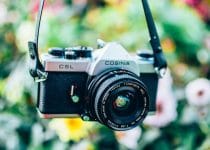So You&039;re Thinking Of Joining The SLR Rebellion? (Or, How I Learned To Stop Worrying And Love Interchangeable Lenses)
Digital Single-Lens Reflex cameras, or SLRs as they’re more commonly known, can seem a bit intimidating at first. All those buttons, dials, and interchangeable lenses can be overwhelming for someone upgrading from a smartphone or a basic point-and-shoot. But don’t worry, taking the leap into the world of SLRs is a rewarding experience that opens up a whole new universe of photographic possibilities.
One of the biggest advantages of an SLR is the ability to change lenses. This allows you to tailor your camera to the specific situation, whether you're shooting a sweeping landscape with a wide-angle lens, capturing a bird in flight with a telephoto lens, or blurring the background with a fast prime lens for stunning portraits. The larger sensor size in SLRs also contributes to better image quality, particularly in low-light conditions.
Getting started with an SLR doesn't require breaking the bank. There are plenty of entry-level models available that offer excellent value for money. Look for features like autofocus, image stabilization, and a decent megapixel count. Don't get too caught up in the megapixel race, though; a moderate megapixel count is more than sufficient for most purposes.
Once you have your camera, take some time to familiarize yourself with the basic controls. Learn how to adjust the aperture, shutter speed, and ISO. These three elements work together to control the exposure of your image, and understanding their relationship is key to taking creative control of your photography.
Experiment with different shooting modes. Most SLRs offer a range of automatic and semi-automatic modes that can help you get started. As you gain confidence, try switching to manual mode to unlock the full potential of your camera. Don't be afraid to make mistakes; that's how you learn!
The beauty of digital photography is that you can experiment without wasting film. Take lots of photos, try different settings, and see what works. Join online photography communities and forums to share your work and get feedback from other photographers.
Learning to use an SLR is a journey, not a destination. There's always something new to discover, a new technique to try, or a new lens to add to your collection. Embrace the learning process and enjoy the creative freedom that comes with having an SLR in your hands.
So, take the plunge! The world of SLR photography awaits, and with a little patience and practice, you’ll be capturing stunning images in no time. Who knows, you might even start calling yourself a “photographer” without feeling like a fraud.


